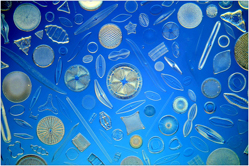Crossref Citations
This article has been cited by the following publications. This list is generated based on data provided by
Crossref.
Sienkiewicz, A.
Kierys, A.
Gorgol, M.
and
Zaleski, R.
2017.
Porosity of Silica Monoliths with Tailored Mesopores of Ink-Bottle Shape Determined by Nitrogen Adsorption and Positron Annihilation Lifetime Spectroscopy.
Acta Physica Polonica A,
Vol. 132,
Issue. 5,
p.
1568.
Isakova, Anna
and
Novakovic, Katarina
2017.
Oscillatory chemical reactions in the quest for rhythmic motion of smart materials.
European Polymer Journal,
Vol. 95,
Issue. ,
p.
430.
Diab, Roudayna
Canilho, Nadia
Pavel, Ileana A.
Haffner, Fernanda B.
Girardon, Maxime
and
Pasc, Andreea
2017.
Silica-based systems for oral delivery of drugs, macromolecules and cells.
Advances in Colloid and Interface Science,
Vol. 249,
Issue. ,
p.
346.
Presti, M. Lo
Ragni, R.
Vona, D.
Leone, G.
Cicco, S.
and
Farinola, G. M.
2018.
In vivo doped biosilica from living Thalassiosira weissflogii diatoms with a triethoxysilyl functionalized red emitting fluorophore.
MRS Advances,
Vol. 3,
Issue. 27,
p.
1509.
Diab, Mahmud
and
Mokari, Taleb
2018.
Bioinspired Hierarchical Porous Structures for Engineering Advanced Functional Inorganic Materials.
Advanced Materials,
Vol. 30,
Issue. 41,
Vona, Danilo
Cicco, Stefania Roberta
Ragni, Roberta
Leone, Gabriella
Marco, Lo Presti
and
Farinola, Gianluca Maria
2018.
Biosilica/polydopamine/silver nanoparticles composites: new hybrid multifunctional heterostructures obtained by chemical modification of Thalassiosira weissflogii silica shells.
MRS Communications,
Vol. 8,
Issue. 3,
p.
911.
De Tommasi, Edoardo
Congestri, Roberta
Dardano, Principia
De Luca, Anna Chiara
Managò, Stefano
Rea, Ilaria
and
De Stefano, Mario
2018.
UV-shielding and wavelength conversion by centric diatom nanopatterned frustules.
Scientific Reports,
Vol. 8,
Issue. 1,
Vona, Danilo
Leone, Gabriella
Presti, Marco Lo
Ragni, Roberta
Daniel, Jonathan
Blanchard-Desce, Mireille
Farinola, Gianluca M.
and
Cicco, Stefania R.
2018.
In vivo functionalization of biosilica from Thalassiosira weissflogii with a two-photon red emitting fluorescent tag.
MRS Advances,
Vol. 3,
Issue. 29,
p.
1611.
Ragni, Roberta
Cicco, Stefania R.
Vona, Danilo
and
Farinola, Gianluca M.
2018.
Multiple Routes to Smart Nanostructured Materials from Diatom Microalgae: A Chemical Perspective.
Advanced Materials,
Vol. 30,
Issue. 19,
Korkmaz, Aysun
Kenton, Maya
Aksin, Gulsen
Kahraman, Mehmet
and
Wachsmann-Hogiu, Sebastian
2018.
Inexpensive and Flexible SERS Substrates on Adhesive Tape Based on Biosilica Plasmonic Nanocomposites.
ACS Applied Nano Materials,
Vol. 1,
Issue. 9,
p.
5316.
Branco-Vieira, Monique
San Martin, Sergio
Agurto, Cristian
Freitas, Marcos A.V.
Mata, Teresa M.
Martins, António A.
and
Caetano, Nídia
2018.
Phaeodactylum tricornutum derived biosilica purification for energy applications.
Energy Procedia,
Vol. 153,
Issue. ,
p.
279.
Gonçalves, M. Clara
2018.
Sol-Gel Silica Nanoparticles in Medicine: A Natural Choice. Design, Synthesis and Products.
Molecules,
Vol. 23,
Issue. 8,
p.
2021.
Ragni, Roberta
Scotognella, Francesco
Vona, Danilo
Moretti, Luca
Altamura, Emiliano
Ceccone, Giacomo
Mehn, Dora
Cicco, Stefania R.
Palumbo, Fabio
Lanzani, Guglielmo
and
Farinola, Gianluca M.
2018.
Hybrid Photonic Nanostructures by In Vivo Incorporation of an Organic Fluorophore into Diatom Algae.
Advanced Functional Materials,
Vol. 28,
Issue. 24,
Bae, Kihyeon
Ku, Bon Jun
Kim, Youngjin
Mnoyan, Anush
Lee, Kyubock
and
Lee, Kyung Jin
2019.
Black Diatom Colloids toward Efficient Photothermal Converters for Solar-to-Steam Generation.
ACS Applied Materials & Interfaces,
Vol. 11,
Issue. 4,
p.
4531.
Vona, Danilo
Mezzina, Nicoletta
Cicco, Stefania Roberta
Leone, Gabriella
Ragni, Roberta
Lo Presti, Marco
Farinola, Gianluca M.
Parak, Wolfgang J.
and
Osiński, Marek
2019.
Diatomaceous earth/polydopamine hybrid microstructures as enzymes support for biological applications.
p.
13.
Ragni, Roberta
Leone, Gabriella
la Gatta, Simona
Rizzo, Giorgio
Lo Presti, Marco
De Leo, Vincenzo
Milano, Francesco
Trotta, Massimo
and
Farinola, G. M.
2019.
A heptamethine cyanine dye suitable as antenna in biohybrids based on bacterial photosynthetic reaction center.
MRS Advances,
Vol. 4,
Issue. 20,
p.
1143.
Milano, Francesco
Punzi, Angela
Ragni, Roberta
Trotta, Massimo
and
Farinola, Gianluca M.
2019.
Photonics and Optoelectronics with Bacteria: Making Materials from Photosynthetic Microorganisms.
Advanced Functional Materials,
Vol. 29,
Issue. 21,
Presti, Marco Lo
Vona, Danilo
Leone, Gabriella
Rizzo, Giorgio
Ragni, Roberta
Cicco, Stefania R.
Milano, Francesco
Palumbo, Fabio
Trotta, Massimo
and
Farinola, Gianluca M.
2019.
Nanostructured interfaces between photosynthetic bacterial Reaction Center and Silicon electrodes.
MRS Advances,
Vol. 4,
Issue. 31-32,
p.
1741.
Della Rosa, Giulia
Vona, Danilo
Aloisi, Alessandra
Ragni, Roberta
Di Corato, Riccardo
Lo Presti, Marco
Cicco, Stefania R.
Altamura, Emiliano
Taurino, Antonietta
Catalano, Massimo
Farinola, Gianluca M.
and
Rinaldi, Rosaria
2019.
Luminescent Silica-Based Nanostructures from in Vivo Iridium-Doped Diatoms Microalgae.
ACS Sustainable Chemistry & Engineering,
Vol. 7,
Issue. 2,
p.
2207.
Ragni, R.
Leone, G.
Rizzo, G.
la Gatta, S.
Milano, F.
Trotta, M.
and
Farinola, G. M.
2019.
Synthesis of two cyanine dyes as potential artificial antennas for the bacterial photosynthetic Reaction Center.
MRS Advances,
Vol. 4,
Issue. 22,
p.
1293.




